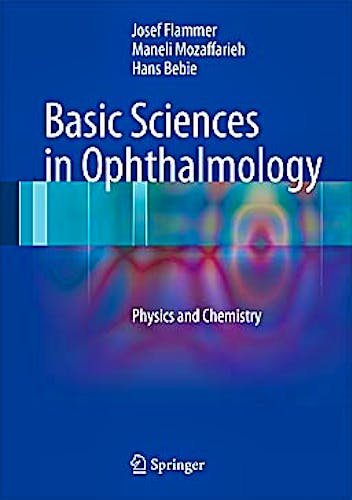

No hay productos en el carrito



Basic Sciences in Ophthalmology. Physics and Chemistry
Flammer, J. — Mozaffarieh, M. — Bebie, H.
1ª Edición Marzo 2013
Inglés
Tapa dura
281 pags
752 gr
19 x 26 x 2 cm
ISBN 9783642322600
Editorial SPRINGER
LIBRO IMPRESO
-5%
145,59 €138,31 €IVA incluido
139,99 €132,99 €IVA no incluido
Recíbelo en un plazo de
2 - 3 semanas
About this book
- Links clinical ophthalmology directly to its basic science roots
- Discusses physical and chemical principles in the depth required for a sound understanding of modern ophthalmology
- Aids residents to prepare for the basic science examination of the International Council of Ophthalmology
- Contains about 450 illustrations selected to enhance understanding
Basic Sciences in Ophthalmology aims to link clinical ophthalmology directly to its basic science roots. This first volume describes the physics and chemistry required for a sound understanding of modern ophthalmology. The text guides the reader from short descriptions of historical background and basic introductions to recent aspects that are relevant in daily clinical practice.
The eye is the organ that recognizes light, and most examinations and many treatments rely on light. Therefore, the book starts with an extensive discussion of the nature of light, the interaction of light with matter, and the way in which light is used in ophthalmic examinations and treatments. After describing traditional methods of imaging, particular emphasis is placed on modern instrumentation such as OCT. This topic is complemented by discussion of other techniques including ultrasound, X-rays, and MRI. A comprehensive overview is devoted to the interaction between light and tissues in different types of laser treatment. The chemistry section focuses on compounds particularly relevant to the eye, such as oxygen and water. Special attention is also devoted to the origin and consequences of oxidative stress. Finally, the physical behavior of chemical compounds, such as gas or silicone oil, in the eye is explained.
The complex material is made easy to understand through the use of many examples taken from the field of ophthalmology. The text is complemented by about 450 figures. This volume will be a great asset both to residents preparing for their basic science examination and to experienced professionals, including ophthalmologists and optometrists.
Table of contents
What is light?- The interaction between light and matter.- Light sources.- Examinations with light.- Ultrasound diagnostics.- Further imaging procedures.- Interventions with laser light.- Some history of chemistry.- Oxygen.- Water.- Carbon dioxide (CO2).- Nitric oxide.- Redox reactions.- DNA.- RNA.- Proteins.- Lipids.- Matter: using water as an example.- If you are interested in more.- Appendix: Units and constants.
© 2025 Axón Librería S.L.
2.149.0